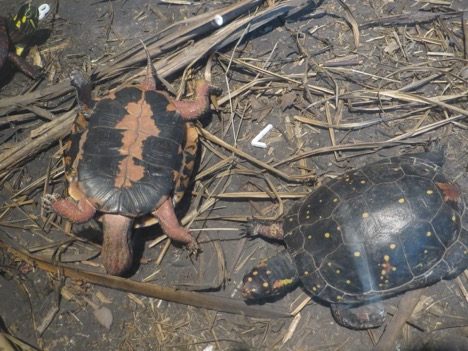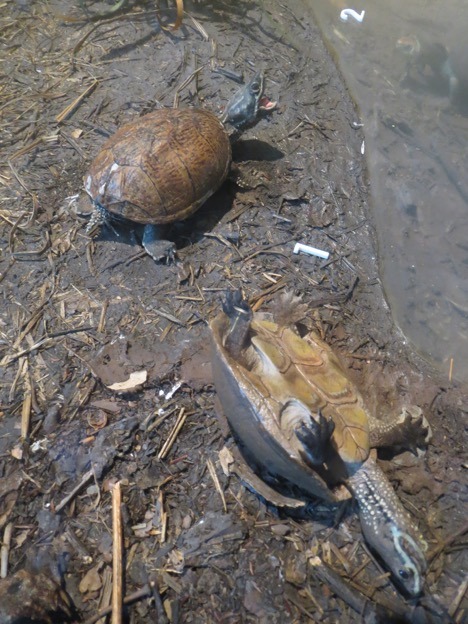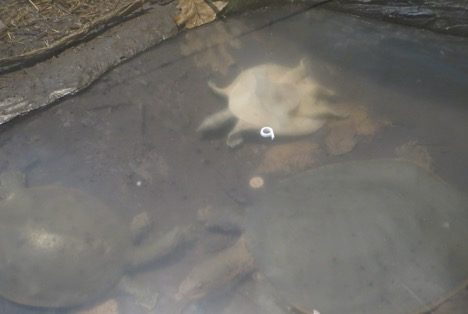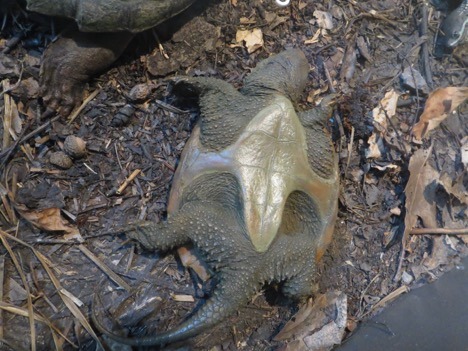by Patrick McShea

Upside down is an unnatural state. Yet within the museum’s display of Pennsylvania turtles, four of 14 taxidermy mounts are bottom side up. With strained necks and legs positioned in frozen flail, the four reptiles, each representing a different
turtle species, appear in perpetual effort to right themselves.

Their awkward stance reveals clever exhibit design. A turtle’s bottom shell, or plastron, differs drastically from its upper shell, or carapace, in size, shape, color pattern, and surface texture. The overturned turtles instantly convey this visual information to attentive viewers.

At Carnegie Museum of Natural History, displays of Pennsylvania’s amphibians and reptiles can be found on the Daniel G. and Carole L. Kamin T. rex Overlook.
For addition species information visit: http://www.fishandboat.com/Resource/AmphibiansandReptiles/Pages/default.aspx

Patrick McShea works in the Education and Visitor Experience department of Carnegie Museum of Natural History. Museum employees are encouraged to blog about their unique experiences of working at the museum.
Related Content
Carnegie Museum of Natural History Blog Citation Information
Blog author: McShea, PatrickPublication date: July 14, 2017
